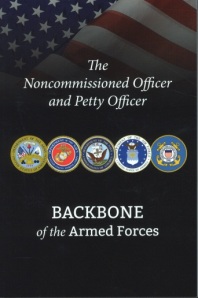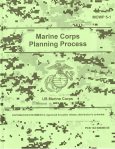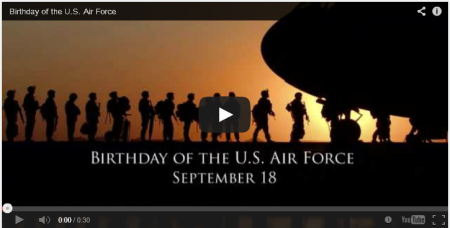 March is National Women’s History Month, and many Federal agencies are paying tribute to the many generations of women who have made invaluable contributions to our society. According to the Law Library of Congress’ guide to the legislative history of Women’s History Month, “Women’s History Month had its origins as a national celebration in 1981 when Congress passed Public Law 97-28 which authorized and requested the President to proclaim the week beginning March 7, 1982 as ‘Women’s History Week.’ Throughout the next five years, Congress continued to pass joint resolutions designating a week in March as ‘Women’s History Week.’ In 1987, after being petitioned by the National Women’s History Project, Congress passed Public Law 100-9 which designated the month of March 1987 as ‘Women’s History Month.’ Between 1988 and 1994, Congress passed additional resolutions requesting and authorizing the President to proclaim March of each year as Women’s History Month. Since 1995, Presidents Clinton, Bush and Obama have issued a series of annual proclamations designating the month of March as ‘Women’s History Month.”
March is National Women’s History Month, and many Federal agencies are paying tribute to the many generations of women who have made invaluable contributions to our society. According to the Law Library of Congress’ guide to the legislative history of Women’s History Month, “Women’s History Month had its origins as a national celebration in 1981 when Congress passed Public Law 97-28 which authorized and requested the President to proclaim the week beginning March 7, 1982 as ‘Women’s History Week.’ Throughout the next five years, Congress continued to pass joint resolutions designating a week in March as ‘Women’s History Week.’ In 1987, after being petitioned by the National Women’s History Project, Congress passed Public Law 100-9 which designated the month of March 1987 as ‘Women’s History Month.’ Between 1988 and 1994, Congress passed additional resolutions requesting and authorizing the President to proclaim March of each year as Women’s History Month. Since 1995, Presidents Clinton, Bush and Obama have issued a series of annual proclamations designating the month of March as ‘Women’s History Month.”
The Library of Congress and other agencies offer many rich collections related to Women’s History Month. You can view a list here.
Also a great resource on the topic of women’s history is the National Women’s History project. According to their site, this organization “recognizes and celebrates the diverse and historic accomplishments of women by providing informational services and educational and promotional materials.” The theme this year from the National Women’s History Project is Weaving the Stories of Women’s Lives. You can read about their 2015 honorees here.
A new publication from the National Defense University ties in well with this theme. Titled “Women on the Frontlines of Peace and Security,” this book includes a foreword by Hillary Rodham Clinton and Leon Panetta. The basic premise is clear: if we hope to prevent conflict and promote peace, we must empower women as full partners. Half of the world’s population are women and yet the decisions affecting women—economics, security, government structure, education, employment, war, and peace are often systematically being made without women’s representation.
 In this publication, experts from human rights activists, developmental professionals, and military leaders, share the importance of bringing together the diverse voices of these under-represented women. And while the focus is on the frontlines of military and civil conflict, the stories and case studies indeed weave the stories of women’s lives in readable and well-documented summaries. Included in the volume are numerous photographs of women participating in the governing, protecting, and policing in their homelands or as part of peacekeeping forces. The photographs are an important part of the message of this book, showing women in positions of authority and providing security and protection.
In this publication, experts from human rights activists, developmental professionals, and military leaders, share the importance of bringing together the diverse voices of these under-represented women. And while the focus is on the frontlines of military and civil conflict, the stories and case studies indeed weave the stories of women’s lives in readable and well-documented summaries. Included in the volume are numerous photographs of women participating in the governing, protecting, and policing in their homelands or as part of peacekeeping forces. The photographs are an important part of the message of this book, showing women in positions of authority and providing security and protection.
The discussions are broken into five categories:
- Integrating Women into US Defense and Foreign Policy
- Women and Conflict Prevention
- Women s Equal Participants in Conflict Resolution
- Protections for Women During and After Conflict
- Women’s Equal Access to the Means for Recovery
The goal of the book is to continue the dialogue on the importance of including women in security and development of international peace. By continuing to govern and make decisions with half the population excluded or ignored, security risks are greatly increased and sense of community and opportunities for peace are even more decreased. It’s a great read with a great collection of historic photographs.
The U.S. Government Bookstore offers an entire collection of publications focused on women’s issues and women’s history. Check it out here.
There are also resources available on the topic from GPO’s Catalog of U.S. Government Publications (CGP). Here are just a few examples.
- In December 2011, President Obama signed an executive order directing the S. National Action Plan on Women, Peace, and Security be implemented. According to the plan, “The goal is as simple as it is profound: to empower half the world’s population as equal partners in preventing conflict and building peace in countries threatened and affected by war, violence and insecurity. Achieving this goal is critical to our national and global security.”
- #workingfamilies National Toolkit, focusing on how we can help our labor market work better in the 21st century by strengthening our nation’s workplaces to better support working families.
- Commission to Study the Potential Creation of a National Women’s History Museum Act of 2013: report together with additional views (to accompany H.R. 863) (including cost estimate of the Congressional Budget Office).
- Empowerment in the workplace: hearing before the Joint Economic Committee, Congress of the United States, One Hundred Thirteenth Congress, second session, June 18, 2014.
- Hearing on women’s education: promoting development, countering radicalism ; and markup of H.R. 3583, Malala Yousafzai Scholarship Act : convened before the Committee on Foreign Affairs, House of Representatives, One Hundred Thirteenth Congress, second session, April 3, 2014.
For an interesting insight into the history of women in the U.S. Government Publishing Office’s workforce, check out these two new webcasts, “Women in the GPO Workforce – GPO’s Women’s History Month (2015),” presented by GPO’s Agency Historian, George Barnum.
For access to great publications from the U.S. Government:
- Order by Phone: You may also order print editions by calling our Customer Contact Center Monday through Friday, 8 am to 5:30 pm Eastern (except US Federal holidays). From US and Canada, call toll-free 1.866.512.1800. DC or International customers call +1.202.512.1800.
- Shop our Retail Store: Buy a copy of any print editions from this collection at GPO’s retail bookstore at 710 North Capitol Street NW, Washington, DC 20401, open Monday–Friday, 9 a.m. to 4 p.m., except Federal holidays, Call (202) 512-0132 for information or to arrange in-store pick-up.
- Visit a Federal depository library: Search for U.S. Government publications in a nearby Federal depository library. You can find the records for most titles in GPO’s Catalog of U.S. Government Publications.
About the authors: Robin Haun-Mohamed is the Chief of Outreach and Support in GPO’s Library Services & Content Management division. Kelly Seifert is the Lead Planning Specialist in GPO’s Library Services & Content Management division.




 Posted by Trudy Hawkins
Posted by Trudy Hawkins 














































